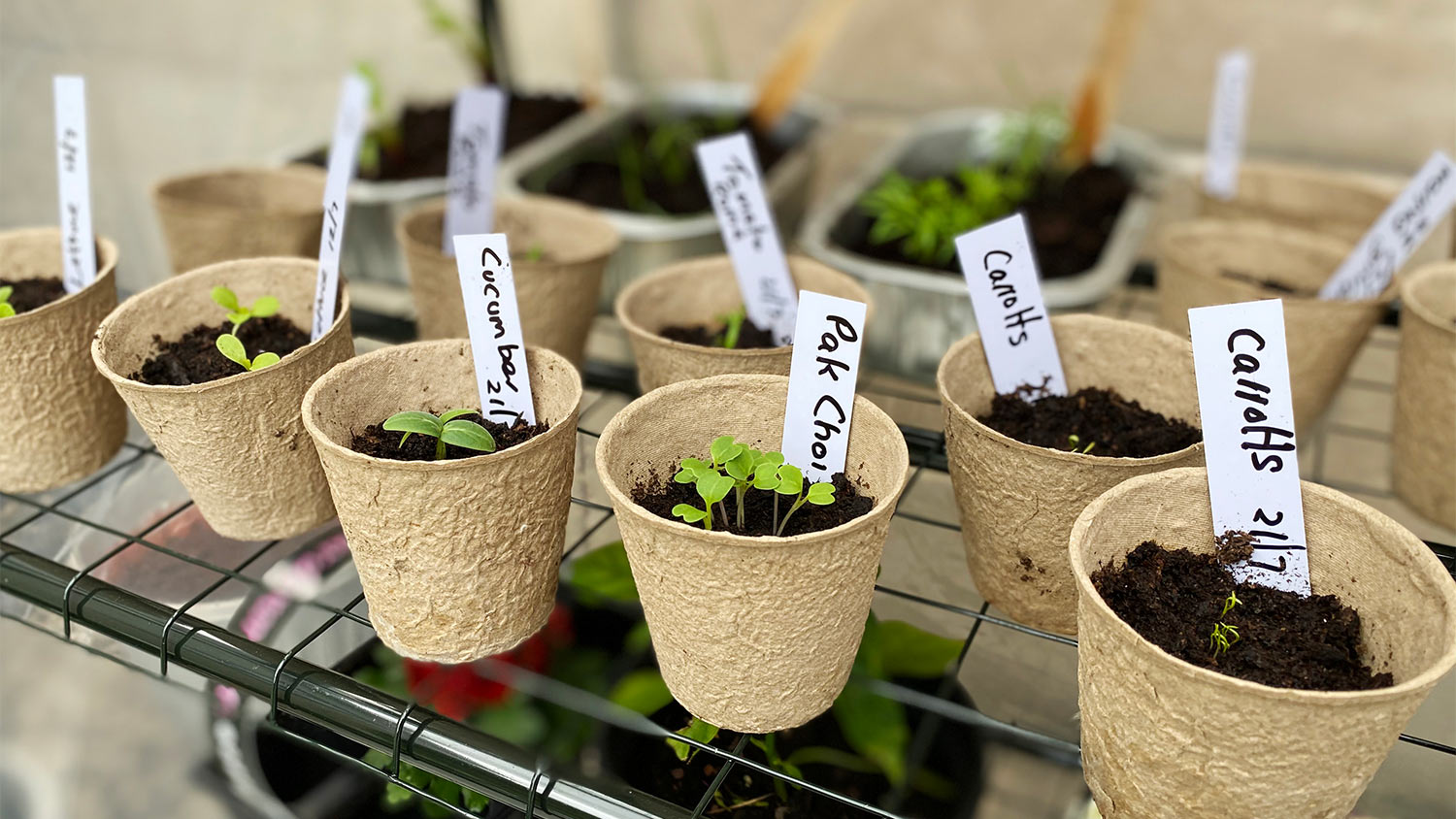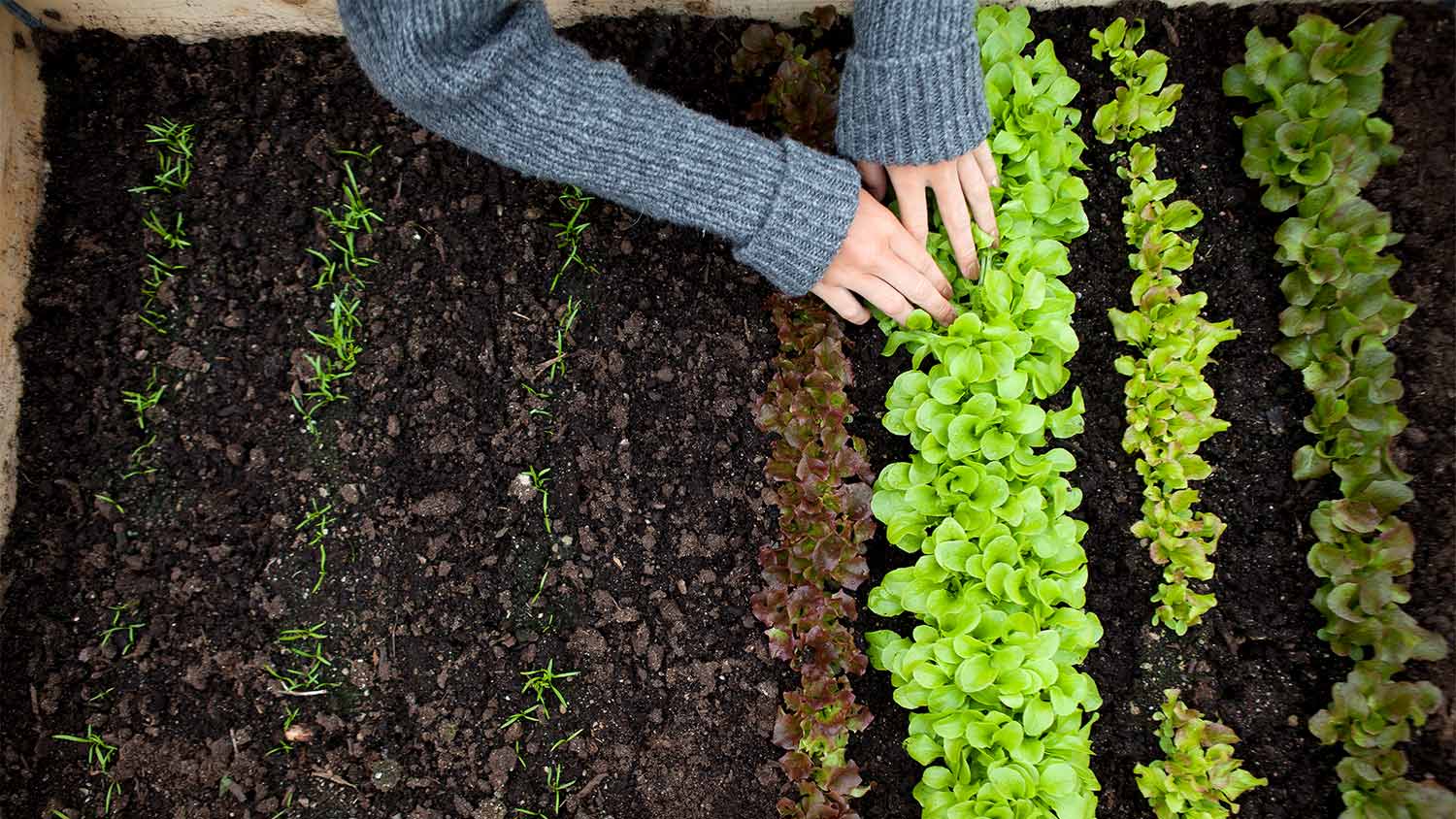From Carrots to Chrysanthemums: How to Plan Your Planting Calendar and Season
Tiptoe through the tulips by knowing exactly when to plant everything in your home garden


Get to know your hardiness zones and frost date to plan your planting schedule.
Each species of plant has a different planting and harvesting schedule.
Consider starting some plants indoors for extra protection.
Create a planting calendar before the season begins.
Home gardeners spend the winter daydreaming about that last frost when seedlings can come out of their indoor retreats and head outdoors. Mapping out a planting calendar is one of the most important steps to ensure you grow healthy garden plants. Not only will the right planting schedule help your garden thrive, but it will also time out the perfect harvest for your end-of-summer and fall recipes. All you have to do is follow these fall gardening tips and tasks and you’re good to go.
How to Calculate Planting Dates
Every species of fruit, flower, veggie, tree, and herb has its preferred growing schedule and environment. But before you get overwhelmed by their range of needs and personalities, check out this equation for figuring out when to plant them in the ground or inside.
On a very basic level, a seed's planting schedule comes down to your hardiness zone, your first and last frost date, and the tips for watering and pruning on your seed packets.
Learn Your USDA Hardiness Zone
The USDA hardiness zone map is a gardener's best bud. The map breaks each region into categories by its coldest winter temperature. Each plant then notes its preferred hardiness zones. In the United States, you'll mainly find zones 3 to 11, with 3 up in the tip of North Dakota and 11 way down in the Florida Keys.
Remember that microclimate factors will not show up on the map. So, if you live at a high elevation, next to Lake Erie, or in a densely shaded yard, your planting preferences may differ slightly.
Note Your Predicted Frost Dates
The National Weather Service also maps out the year’s first and last frost dates, typically in a prediction window of one to two weeks.
Why are frost dates so important? A frost can either send a plant into its dormant stage or wipe it out for good. Some bulbs go in before the first frost of the winter season, while others should come out of the ground and head indoors.
Knowing your earliest frost date is also crucial for scheduling your fruit and vegetable harvest. If your eggplant takes 90 dates to mature, you don't want to leave it for late summer. But let's not get too ahead of ourselves. Get those frost dates on your planting calendar and check out the best plants for your area.
Check Your Plant Tags and Seed Packets
Now that you're a pro at reading hardiness zones and frost info, you'll understand the back of your seed packets and the instructions that come with seedlings or potted plants.
Each variety will list a range of hardiness zones suitable for growth. Sure, we know that orange trees won't thrive in Maine and Florida isn't the land of the artichoke, but we need these guides to figure out everything in between.
Consider Planting Indoor Seedlings

Hardiness zones and frost dates relate to outdoor planting, but what about starting seedlings indoors in a controlled environment? Plants with slow root growth that can easily wither in an unexpected frost can get their start inside. You can easily plant herbs or grow food in small spaces.
Yet again, this widely varies depending on the plant species, where you live, and your gardening preferences. Starting tomatoes early can keep them safe in those delicate, early days and speed up when you can make Panzanella. Other plants, such as cucumbers, squash, and most root veggies, don't like to be jostled, so it's best to start them outdoors in their appropriate season.
Common Plantings Seasons for Each Category

As you get to know your favorite flowers, herbs, veggies, and tree species, you'll start to notice the similarities between their preferences. Hearty root vegetables like carrots, lettuce, and some potatoes can head into the ground before the final frost—again, depending on where you live. Other plants like perennial shrubs or flowers may prefer to head into the ground in the late fall or winter to have time to take root. Let's look at some common categories.
Perennials
Most perennial flowers—perennials come back more than two years in a row—prefer a plant date before, close to, or just after your frost. When started from seed, they may need several weeks, if not months, to settle roots into the soil.
When to Plant Popular Perennials
Before the first frost: Tulip bulbs, Ranunculus bulbs, Iris bulbs, Peony roots
1–2 weeks before last frost: Daisies, Dianthus, Delphinium, Violas
On last frost date: Catmint, Columbine, Helianthus, Hollyhocks
1–2 weeks after last frost: Foxglove, Hibiscus, Milkweed, Phlox
You can also start seeds planted around the last frost date indoors 6–10 weeks beforehand.
Flowering Annuals
Annual flowers take less time to sprout and bloom but can still take six to eight weeks to mature. They don’t typically take as long as perennials since they grow quickly and die out by the first frost. Purchase these seeds or seedlings each year for your flower garden or containers, or start seeds indoors several weeks before transfer.
When to Plant Popular Flowering Annuals
1–2 weeks before last frost: Alyssum, Calendula, Annual Delphinium
On last frost date: Aster, Celosia, Marigolds, Snapdragons
1–2 weeks after last frost: Impatiens, Morning Glories, Sunflowers
You can also start seeds planted around the last frost date indoors 3–10 weeks beforehand.
Vegetables and Herbs
As we noted above, a handful of veggies and herbs enjoy an indoor headstart in a backyard vegetable garden. Some are so hardy that they can head into the ground before your final frost, while others prefer warm, soft ground without the risk of another freeze. Remember to check your hardiness zone for each type of veggie, as they can depending on their variety.
When to Plant Popular Vegetables
2–5 weeks before last frost: Beets, Broccoli, Carrots, Chives, Dill, Lemon Balm
0–3 weeks after last frost: Cabbage, Cucumbers, Melons, Potato tubers, Sorrel, Sweet Cicely
Anytime after last frost (often started indoors): Beans, Tomatoes, Peppers, Basil, Cilantro, Oregano
Start some vegetables indoors 2–8 weeks beforehand, depending on instructions and your local climate.
Trees
Planting a container and root-bound tree is a bit trickier. Always begin by checking the tree's ideal hardiness zone and your frost dates like usual. Speak with your local nursery about the specific species and its care.
Overall, you should give your tree the best chance of survival by ensuring its roots have time to take hold before extreme weather. Plant it too close to the first frost, and it could dry out, too close to the summer, and it may heat up too fast. The goal is to avoid shocking your tree in its new home; picking the correct date and root preparation is also key.
Start a Planting Calendar
This bird's-eye-view of choosing the best planting schedule should arm you with the knowledge to create a planting calendar. Your calendar may include:
When to purchase seeds, bulbs, or seedlings
First and last frost dates
When to start seeds indoors
When to transfer plants outdoors
Ideal harvest season
Not only will a calendar cut out the guesswork when managing your vegetable garden, but it will also help you alert your local gardeners of pruning, watering, and harvesting schedules if you head out for vacation.





- Landscapers
- Tree Surgeons
- Gardening Services
- Landscape Architects
- Sod Installation
- Tennis Court Contractors
- Landscape Design
- Retaining Wall Companies
- Grading Companies
- Landscape Rock & Sand Delivery
- Mulch Delivery Services
- Pond Companies
- Artificial Grass Companies
- Shrub Removal & Trimming
- Backyard Design Companies
- Commercial Landscaping
- Koi Pond Services
- Backyard Landscapers
- Trampoline Assembly
- Hedge Trimming
- Pond Services
- Garden Design
- Outdoor Plant Watering
- Putting Greens
- French Drains
- Turf Installation
- Sod Removal Services
- Lawn Repair Services
- Brush Chipping Services
- Hardscape Contractor
- Landscape Rock Removal
- The Ultimate Late Garden Planting Guide for Wherever You Live
- When to Plant Vegetables in Your Garden: Timing, Tips, and More
- When to Start Seeds Indoors: A Comprehensive Guide for Plant Lovers
- 11 Tips for Creating a Bountiful Backyard Garden
- 13 Essential Landscaping Tips for a Beautiful Spring Garden
- The Power of Trees: Learn Which Ones Can Make Your Property Value Flourish
- Identifying Plant Heat Stress: How to Protect Your Garden During a Heat Wave
- Don’t ‘Leaf’ the Lingo to the Pros: Learn These 36 Common Plant Vocabulary Words
- 10 Great Trees for Bees and Other Pollinators
- Bring Back Your Dying (or Dead) Plant With These 8 Tricks










